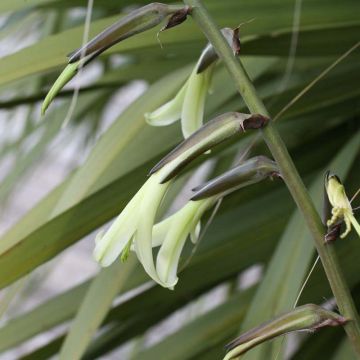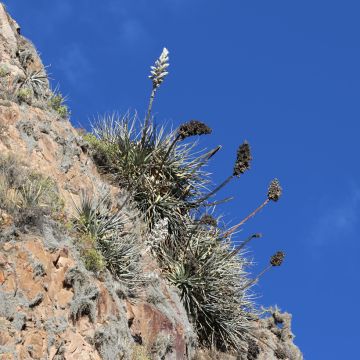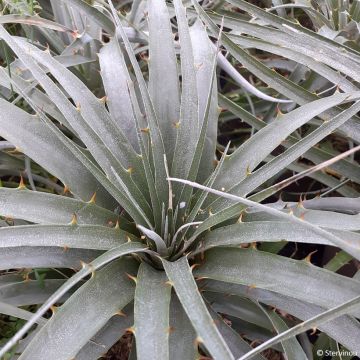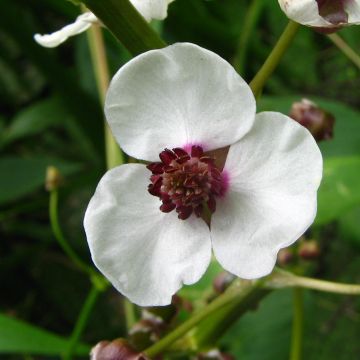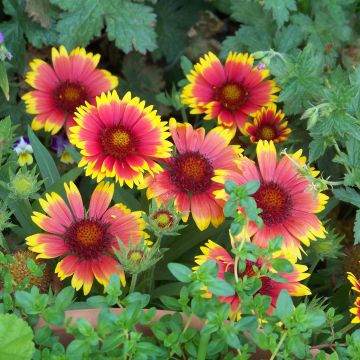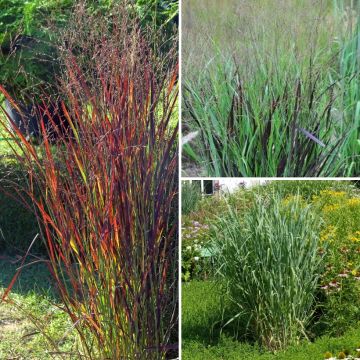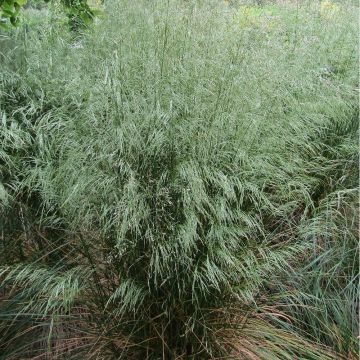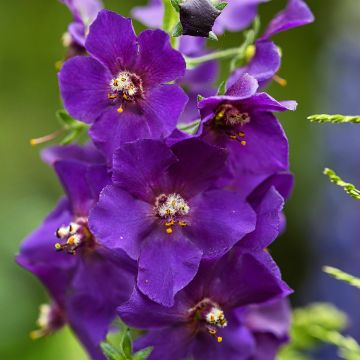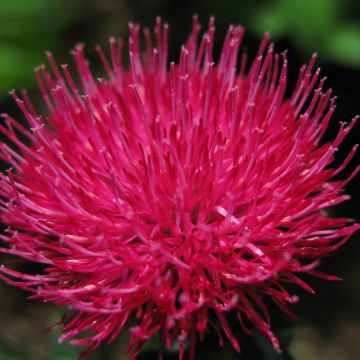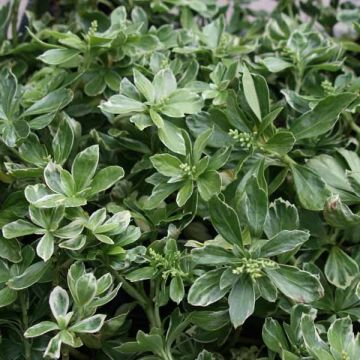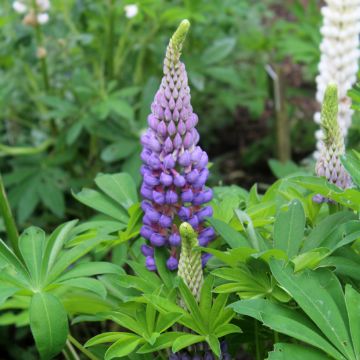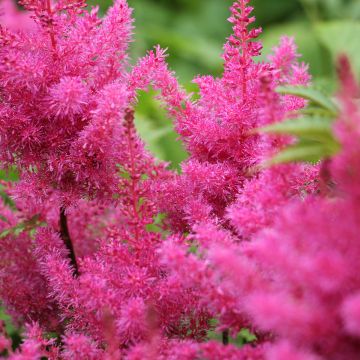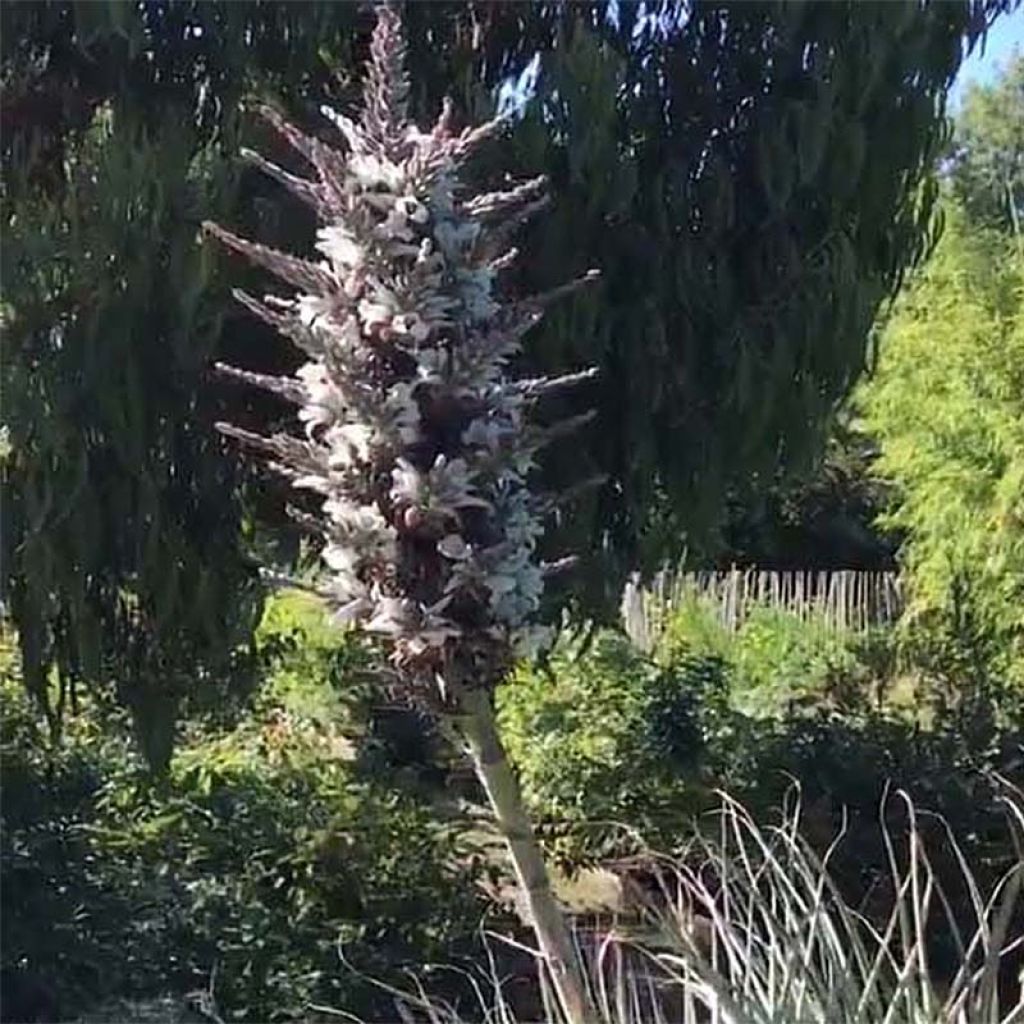

Puya castellanosii
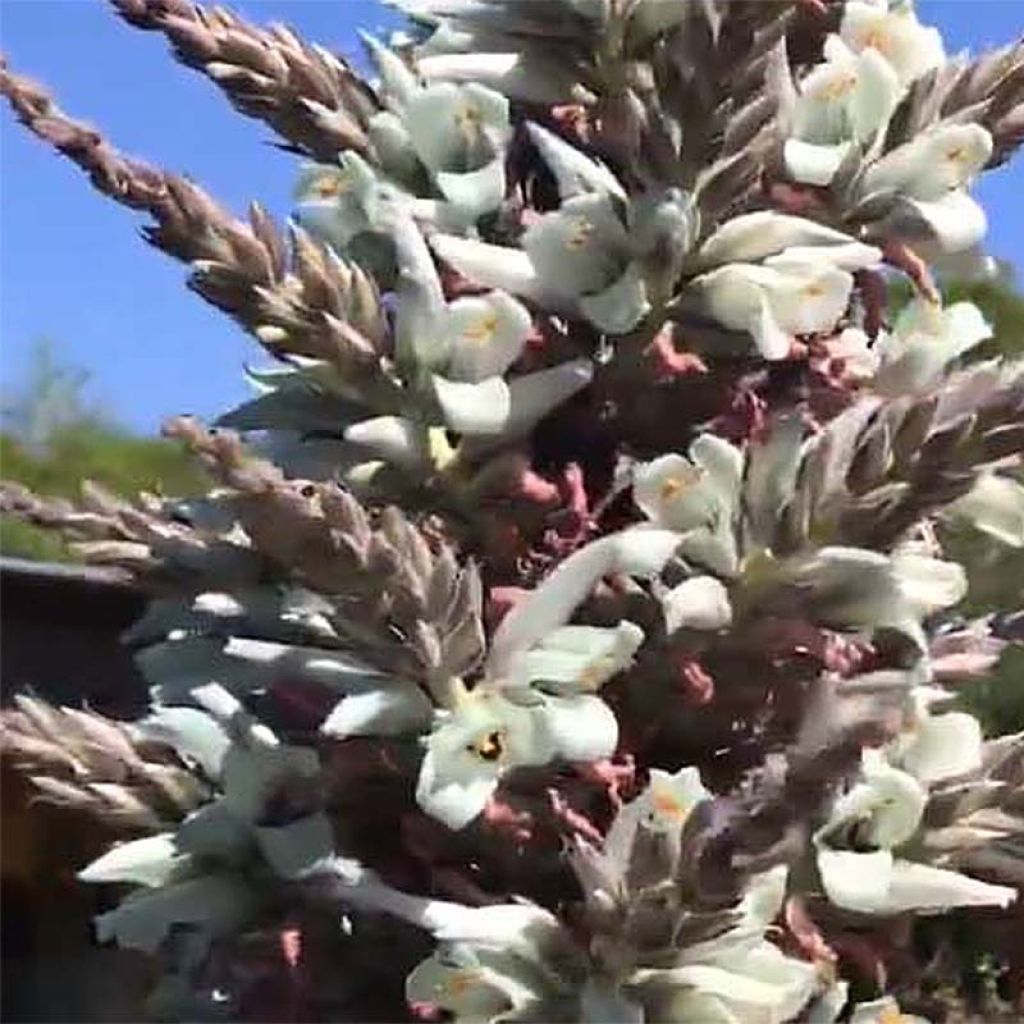

Puya castellanosii
Puya castellanosii
Puya castellanosii
Puya
Why not try an alternative variety in stock?
View all →This plant carries a 12 months recovery warranty
More information
We guarantee the quality of our plants for a full growing cycle, and will replace at our expense any plant that fails to recover under normal climatic and planting conditions.
From €5.90 for pickup delivery and €6.90 for home delivery
Express home delivery from €8.90.
Does this plant fit my garden?
Set up your Plantfit profile →
Description
The Puya castellanosii is part of this group of succulent perennial plants related to pineapples that grow in the arid heathlands of the Andes Mountains. This one, rare in cultivation, is a very beautiful species native to northern Argentina that is interesting for its resistance to dry cold, quite easy to acclimate to the sun in many gardens that are not too humid and not too cold in winter. It forms dense rosettes of spiny gray-blue-silver leaves, very bright, and produces tall flower spikes, rose-violet in color, loaded with pastel blue flowers. In mild climates, it is an excellent rock garden or dry garden plant, without watering. Elsewhere, it can easily be grown in a pot to protect it from cold and damp in winter.
The Puya castellanosii is a perennial plant from the bromeliad family. It is native to the Andes in northern Argentina in the Salta Province, where it develops in large colonies on dry slopes and mountainsides, between 2300 and 3500 meters (7546 and 11483 feet) above sea level. In its natural habitat, it is one of the dominant species in these rocky and arid lands and in these wind-swept meadows where only grasses and dwarf bushes survive. It is a plant that requires dry and well-draining, sandy, poor and limestone soil. Very well adapted to the harsh climate that characterizes its native lands, the Puya castellanosii also endures high solar radiation, snow, very high temperatures during the day, and very low temperatures at night. It can withstand frosts of around -10°C (14°F) in well-drained soil.
The Puya castellanosii grows slowly. It reaches a height of 1 meter (3 feet) and spreads over time to form large clumps of 3 meters (10 feet) in diameter composed of multiple rosettes. The plant forms rosettes of very long leaves covered with a silver-colored wax and bordered by inward-curving spines, brown in color. Mature rosettes, several years old, bloom in late spring. From the center of the rosette emerges a flower spike that can rise up to 1.50 meters (5 feet), or even 2 meters (7 feet), from the ground. This branched inflorescence bears numerous pale blue tubular flowers enclosed in rose-violet bracts and covered with a fine silver fuzz.
The Puya castellanosii requires to be planted in perfectly draining, limestone, and dry soil in winter. This collector's plant finds its place in a rock garden or a gravel garden in a climate that is not too cold and rather dry. It should thrive in our Mediterranean regions or in the southwest. To accompany it in an arid-style rock garden or on a contemporary terrace, consider, for example, Yuccas, Dasylirions, Phormiums, and Nolinas. This plant is easily grown in a pot, in a cactus-type substrate. As soon as the first cold weather arrives, you should store it away from humidity and cold, handling it with caution due to its spines, in a greenhouse or conservatory.
Report an error about the product description
Puya castellanosii in pictures
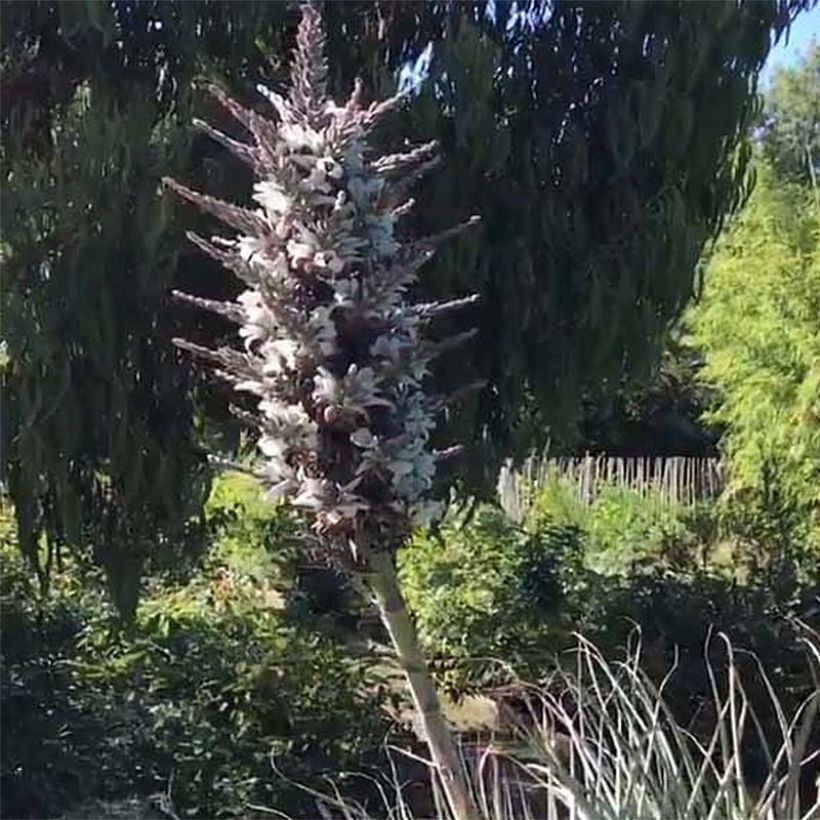

Flowering
Foliage
Plant habit
Botanical data
Puya
castellanosii
Bromeliaceae
Puya
Andes Mountains
Other Puya
Planting and care
The Puya castellanosii is preferably planted in spring. Choose a very sunny, warm location. Install it in a perfectly drained soil, enriched with pumice, sand, and gravel, in a rock garden or on a dry slope. It will be hardy up to -10°C (14°F) if the soil is almost dry in winter. To protect it from rain, you can place a thick mulch at its base and a plastic sheet on the rosette. In summer, it fears the combination of heat and excessive soil humidity, which causes its roots to rot. Once established, this Puya generally does not require watering in summer. In our very dry and very hot regions, occasional watering will be welcome, as well as a foliage shower at the end of a hot day. It particularly appreciates sandy and limestone soils.
Cultivation in pots: prepare a large container with a drainage hole and a layer of drainage material (clay balls, gravel...), which you will fill with a mix of potting soil, sand, and pumice. Water regularly, without exaggeration. Add a bit of cactus or succulent fertilizer to the watering water in spring.
Planting period
Intended location
Care
This item has not been reviewed yet - be the first to leave a review about it.
Summer flowering perennials
Haven't found what you were looking for?
Hardiness is the lowest winter temperature a plant can endure without suffering serious damage or even dying. However, hardiness is affected by location (a sheltered area, such as a patio), protection (winter cover) and soil type (hardiness is improved by well-drained soil).

Photo Sharing Terms & Conditions
In order to encourage gardeners to interact and share their experiences, Promesse de fleurs offers various media enabling content to be uploaded onto its Site - in particular via the ‘Photo sharing’ module.
The User agrees to refrain from:
- Posting any content that is illegal, prejudicial, insulting, racist, inciteful to hatred, revisionist, contrary to public decency, that infringes on privacy or on the privacy rights of third parties, in particular the publicity rights of persons and goods, intellectual property rights, or the right to privacy.
- Submitting content on behalf of a third party;
- Impersonate the identity of a third party and/or publish any personal information about a third party;
In general, the User undertakes to refrain from any unethical behaviour.
All Content (in particular text, comments, files, images, photos, videos, creative works, etc.), which may be subject to property or intellectual property rights, image or other private rights, shall remain the property of the User, subject to the limited rights granted by the terms of the licence granted by Promesse de fleurs as stated below. Users are at liberty to publish or not to publish such Content on the Site, notably via the ‘Photo Sharing’ facility, and accept that this Content shall be made public and freely accessible, notably on the Internet.
Users further acknowledge, undertake to have ,and guarantee that they hold all necessary rights and permissions to publish such material on the Site, in particular with regard to the legislation in force pertaining to any privacy, property, intellectual property, image, or contractual rights, or rights of any other nature. By publishing such Content on the Site, Users acknowledge accepting full liability as publishers of the Content within the meaning of the law, and grant Promesse de fleurs, free of charge, an inclusive, worldwide licence for the said Content for the entire duration of its publication, including all reproduction, representation, up/downloading, displaying, performing, transmission, and storage rights.
Users also grant permission for their name to be linked to the Content and accept that this link may not always be made available.
By engaging in posting material, Users consent to their Content becoming automatically accessible on the Internet, in particular on other sites and/or blogs and/or web pages of the Promesse de fleurs site, including in particular social pages and the Promesse de fleurs catalogue.
Users may secure the removal of entrusted content free of charge by issuing a simple request via our contact form.
The flowering period indicated on our website applies to countries and regions located in USDA zone 8 (France, the United Kingdom, Ireland, the Netherlands, etc.)
It will vary according to where you live:
- In zones 9 to 10 (Italy, Spain, Greece, etc.), flowering will occur about 2 to 4 weeks earlier.
- In zones 6 to 7 (Germany, Poland, Slovenia, and lower mountainous regions), flowering will be delayed by 2 to 3 weeks.
- In zone 5 (Central Europe, Scandinavia), blooming will be delayed by 3 to 5 weeks.
In temperate climates, pruning of spring-flowering shrubs (forsythia, spireas, etc.) should be done just after flowering.
Pruning of summer-flowering shrubs (Indian Lilac, Perovskia, etc.) can be done in winter or spring.
In cold regions as well as with frost-sensitive plants, avoid pruning too early when severe frosts may still occur.
The planting period indicated on our website applies to countries and regions located in USDA zone 8 (France, United Kingdom, Ireland, Netherlands).
It will vary according to where you live:
- In Mediterranean zones (Marseille, Madrid, Milan, etc.), autumn and winter are the best planting periods.
- In continental zones (Strasbourg, Munich, Vienna, etc.), delay planting by 2 to 3 weeks in spring and bring it forward by 2 to 4 weeks in autumn.
- In mountainous regions (the Alps, Pyrenees, Carpathians, etc.), it is best to plant in late spring (May-June) or late summer (August-September).
The harvesting period indicated on our website applies to countries and regions in USDA zone 8 (France, England, Ireland, the Netherlands).
In colder areas (Scandinavia, Poland, Austria...) fruit and vegetable harvests are likely to be delayed by 3-4 weeks.
In warmer areas (Italy, Spain, Greece, etc.), harvesting will probably take place earlier, depending on weather conditions.
The sowing periods indicated on our website apply to countries and regions within USDA Zone 8 (France, UK, Ireland, Netherlands).
In colder areas (Scandinavia, Poland, Austria...), delay any outdoor sowing by 3-4 weeks, or sow under glass.
In warmer climes (Italy, Spain, Greece, etc.), bring outdoor sowing forward by a few weeks.

































